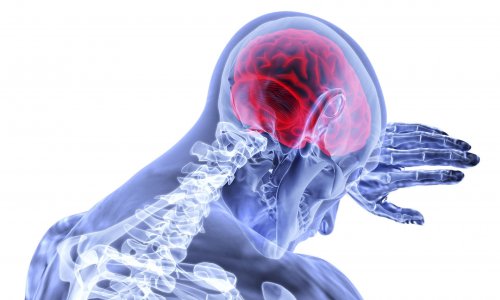Success for tele-stroke service
Report: Mark Nicholls
A telemedicine project is being used in rural areas of eastern England to enable stroke patients to receive clot-busting drugs within a critical three-hour time window. Adapting video-conferencing facilities, a telestroke service has enabled patients to receive a diagnosis from a stroke specialist, who can authorise thrombolytic drugs to be administered to those deemed eligible.
Launched last Autumn with a pilot scheme across four hospitals, England’s eastern region telestroke service has proved so successful that plans are now being drawn up to roll it out to more acute hospital trusts in the region.
Dr Liz Warburton, consultant in stroke medicine at Addenbrooke’s Hospital, Cambridge, and clinical lead for Anglia Stroke and Heart Network, said: ‘Stroke patients need to be administered clot-busting drugs within three hours of the onset of symptoms and can only have this after diagnosis by a consultant. Because of the rural nature of the eastern region of England, it was not always possible to get a patient to hospital on time to get a scan or see a consultant.’
Many patients ran the risk of falling outside the three-hour time window, making them ineligible for the clot-busting drugs that would significantly enhance their chances of a better recovery. However, the East of England Strategic Health Authority (EoESHA) has pledged that most patients should benefit from 24/7 access to stroke thrombolysis. Dr Warburton said to do this with the number of specialists available and the geographical nature of the area was a major huge challenge.
To meet that challenge, stroke specialists looked to telemedicine and a particular example, a successful telemedicine stroke service in Bavaria, southern Germany.
To apply it within an NHS setting the EoESHA set up a telemedicine board of stroke specialists and IT experts to establish a pilot scheme in hospitals in the region where stroke services were relatively advanced: Watford, Southend, Peterborough and Addenbrooke’s.
The pilot uses IOCOM software with a 'computer on wheels' (COW), which houses a fixed video camera and an audio link between A&E departments and the specialist stroke consultant.
Working an on-call rota, six consultants -- Dr Eoin O’Brien and Dr Patrick Barry from Cambridge, Dr Paul Guyler (Southend), Dr David Collas (Watford) and Dr Peter Owusu (Peterborough) and Dr Warburton, have specially-designed laptops with high quality sound and video links enabling them to examine the patient and read CT images.
Dr Warburton said: ‘The consultant can speak to the patient, examine the patient, and conduct an effective remote consultation. The hospital can then upload the brain scan to enable the consultant to make the diagnosis and authorise the use of thrombolytic drugs.’
This has meant patients have a diagnosis within the timeframe, without travelling long distances and – with a shortage of stroke consultants in the eastern region - it provides hospitals and patients access to experienced stroke physicians. ‘The benefits for the patient are huge,’ Dr Warburton said. ‘If they receive thrombolysis within the three hours they are 30% less likely to be disabled after their stroke but, to be fully effective, it is vital to get expert diagnoses immediately. Once diagnosed, they can also be managed locally if they need rehabilitation.’
Additionally, there are staff training benefits and it is cost effective for the health service. Across the East of England there are over 6,000 strokes annually with 10-15% of patients eligible for thrombolysis, though only 1% receives this treatment at present. The EoESHA say if 10% received thrombolysis, an additional 90 patients would be independent stroke survivors equating to an additional cost-saving in the first year of £2.7 million to the NHS and social care in the East of England.
Figures also suggest a saving of £80,000 a year for each hospital joining the network wide on-call rota.
So far, 35 patients have been treated successfully and, once rolled out across the area, EoESHA say the new service is expected to save more than 100 lives annually and enable many more people to avoid long-term disability following a stroke.
‘Overall it has been a tremendous success,’ said Dr Warburton. ‘It has made a real difference to people’s lives and we are now in the process of looking to roll it out further across the eastern region.’
21.05.2010










